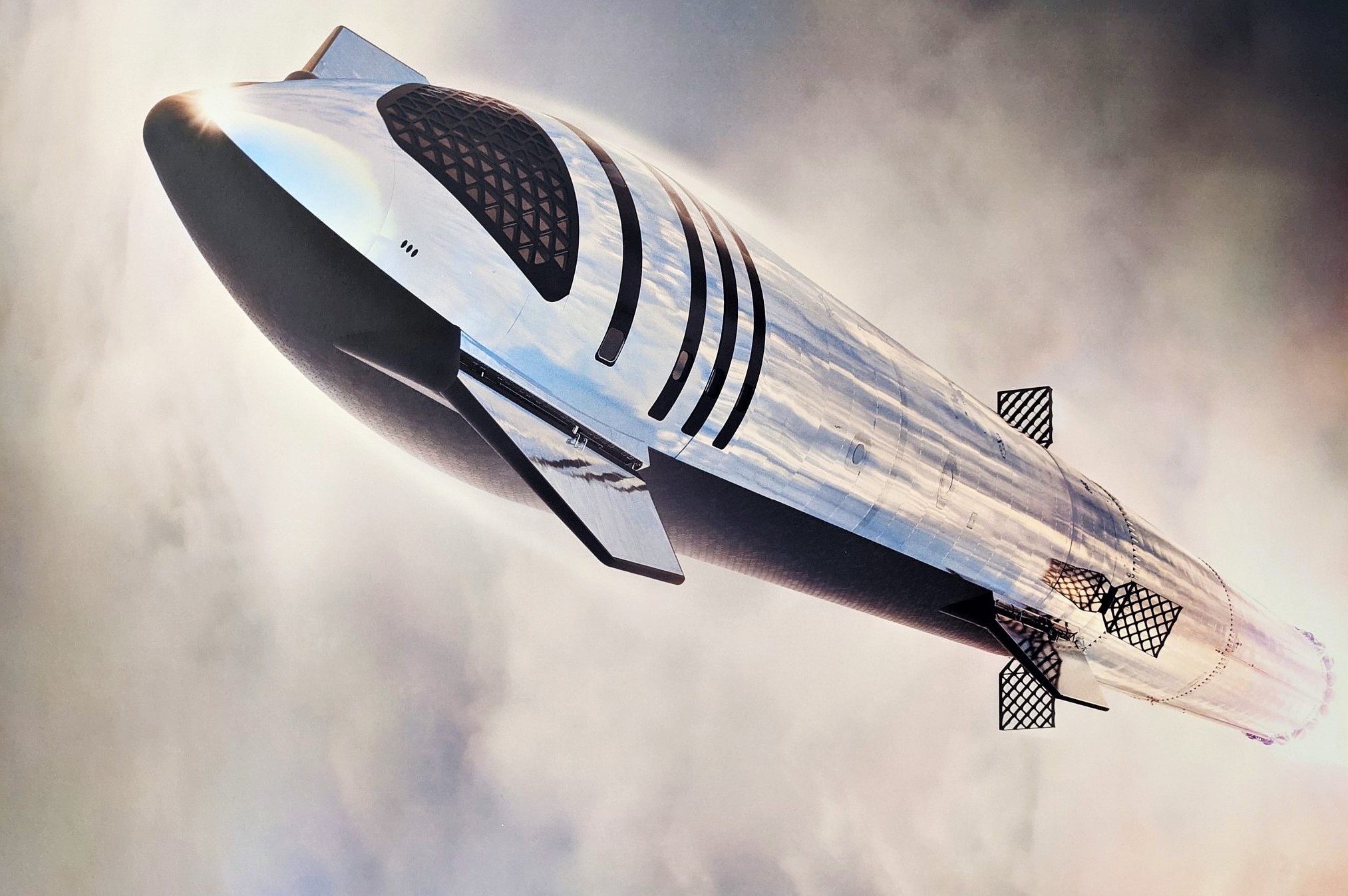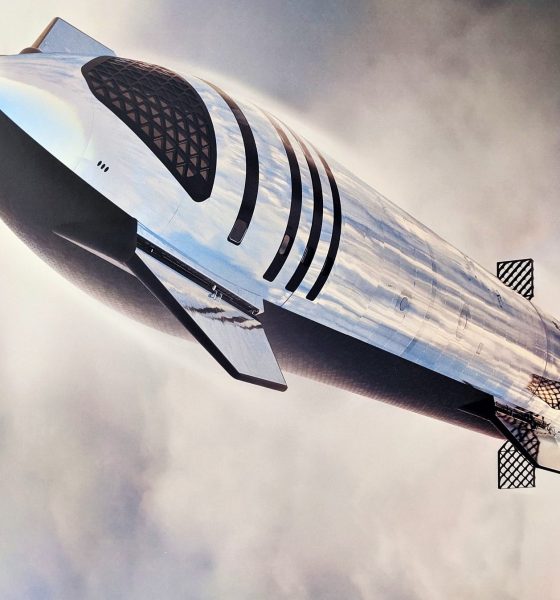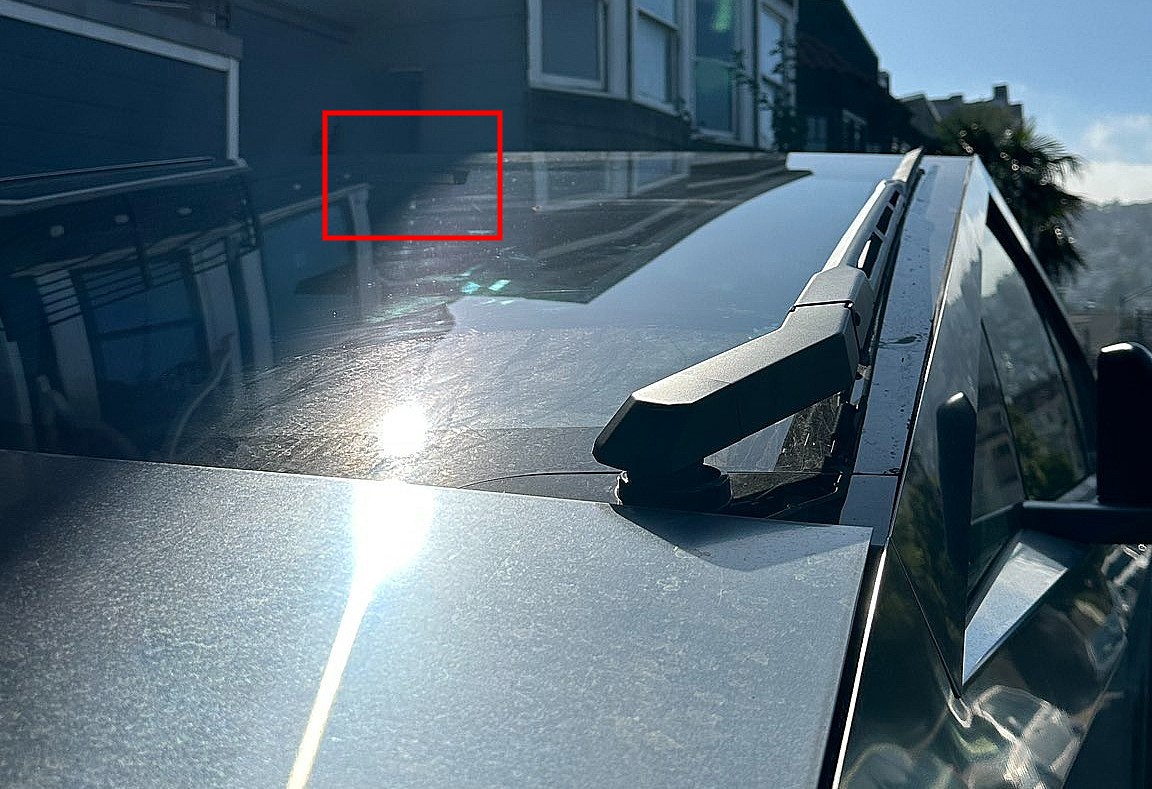

News
SpaceX VP says Starship is already winning commercial launch contracts
A SpaceX executive says that the company’s next-generation, fully-reusable Starship rocket has already secured multiple commercial launch contracts.
Set to debut no earlier than (NET) the first quarter of 2022 with a semi-orbital launch that aims to send Starship about 85% of the way around the Earth, Starship has a ways to go before it’s ready to routinely launch payloads. Nonetheless, SpaceX is confident enough in Starship’s eventual success to have effectively made it the foundation of every one of the company’s future goals – both in the short and long term.
Today, SpaceX’s Falcon rockets have become a spectacularly successful revolution in cost-effective launch through reusability and vertical integration, among other things. Thanks to that unprecedented affordability, SpaceX has been able to kick off the deployment of its Starlink internet constellation, launching more than 1800 satellites and becoming the largest satellite operator in history in less than two and a half years. Where competition is possible, Falcon 9 dominates the global commercial launch market for both small and large satellites. And yet despite its staggering success, Falcon 9 remains at least one or two magnitudes too expensive and too performance-constrained to realize SpaceX’s grander ambitions.
Those overarching goals are simple enough and directly related. First, SpaceX – through Starlink – aims to blanket the Earth’s surface with high-quality, affordable satellite internet that is either indistinguishable from or better than ground-based alternatives, ultimately connecting tens or even hundreds of millions of people to the internet. Second, SpaceX’s founding goal has always been to make humanity a multiplanetary species by enabling the creation of one or several permanent, self-sustaining cities on Mars. For the latter goal, Starship or a fully reusable rocket like it has always been essential – without which it would be prohibitively expensive to launch the sheer mass and volume of supplies needed to build a city on another world.
Recently, if SpaceX’s often hyperbolic CEO is to be believed, Starlink’s success has also become dependent on Starship, with Musk stating in a company-wide memo that SpaceX as a whole could face bankruptcy if Starship isn’t ready to launch 200+ Starlink satellites per month by the end of 2022. While it’s simply untrue that SpaceX is at risk of bankruptcy, there might be some truth behind Musk’s statement. Fearmongering aside, the gist of Musk’s argument is that Starlink is “financially weak” under the current paradigm, where Falcon 9 delivers approximately 50 300-kilogram (~650 lb) satellites to orbit with each launch.
In the same vein as Starship, Musk believes that next-generation “Starlink V2” satellites – several times larger than V1 satellites – will drastically improve the cost-effectiveness of the constellation by allowing SpaceX to squeeze much more network capacity out of every unit of satellite mass. However, making Starlink V2 satellites several times larger would reduce the efficiency of launching them on Falcon 9 by an equal degree – hence the apparently dire need for Starship.
Contrary to Musk’s apocalyptic vision, even if it might be significantly slower and more expensive to deploy, it’s quite likely that a full Starlink V1 constellation launched by Falcon 9 could still be economically viable. What it probably wouldn’t be, though, is exceptionally profitable, which has long been SpaceX’s main plan for funding its multiplanetary dreams. With a Starship capable of achieving its design goals, that could change.
According to Musk and other SpaceX executives, the true cost – before payloads – of a flight-proven Falcon 9 launch is somewhere between $15M and $28M. At an estimated cost of $250-500k apiece, 50-60 Starlink V1 satellites raise the total cost of a Starlink launch to approximately $30-60M – the range between marginal and total cost. In a partially reusable configuration, Falcon 9 is capable of launching about ~16 tons (~35,000 lb) to low Earth orbit (LEO).
Starship, however, is designed to launch at least 100 tons (~220,000 lb) and possibly up to 150 tons (~330,000 lb) to LEO for a marginal cost of as little as $2M. Even if SpaceX is a magnitude off of that target and never gets beyond 100t to LEO, a $20M Starship launch fully loaded with Starlink satellites would still cost five times less than Falcon 9 per unit of satellite mass launched. At 150 tons to LEO for $10M, Starship would cost 15 times less. If SpaceX one day perfects full reusability and marginal costs do fall to $2M, a 150-ton Starship launch could be up to 70 times cheaper than Falcon 9.
For the exact same reasons it could radically improve the cost-efficiency of Starlink deployment and finally make humanity’s expansion beyond Earth affordable enough to be viable, Starship would also inherently revolutionize access to space for all other launch customers – not just SpaceX.
According to SpaceX Vice President of Commercial Sales Tom Ochinero, Starship has already begun to make inroads with SpaceX’s healthy list of existing Falcon customers. While relatively minor and inevitable, it’s still an important symbolic step for SpaceX and Starship as it attempts to deliver a launch vehicle so cheap and capable that it ushers the company’s own Falcon rockets into retirement.

News
Tesla aims to combat common Full Self-Driving problem with new patent
Tesla writes in the patent that its autonomous and semi-autonomous vehicles are heavily reliant on camera systems to navigate and interact with their environment.

Tesla is aiming to combat a common Full Self-Driving problem with a new patent.
One issue with Tesla’s vision-based approach is that sunlight glare can become a troublesome element of everyday travel. Full Self-Driving is certainly an amazing technology, but there are still things Tesla is aiming to figure out with its development.
Unfortunately, it is extremely difficult to get around this issue, and even humans need ways to combat it when they’re driving, as we commonly use sunglasses or sun visors to give us better visibility.
Cameras obviously do not have these ways to fight sunglare, but a new patent Tesla recently had published aims to fight this through a “glare shield.”
Tesla writes in the patent that its autonomous and semi-autonomous vehicles are heavily reliant on camera systems to navigate and interact with their environment.

The ability to see surroundings is crucial for accurate performance, and glare is one element of interference that has yet to be confronted.
Tesla described the patent, which will utilize “a textured surface composed of an array of micro-cones, or cone-shaped formations, which serve to scatter incident light in various directions, thereby reducing glare and improving camera vision.”

The patent was first spotted by Not a Tesla App.
The design of the micro-cones is the first element of the puzzle to fight the excess glare. The patent says they are “optimized in size, angle, and orientation to minimize Total Hemispherical Reflectance (THR) and reflection penalty, enhancing the camera’s ability to accurately interpret visual data.”
Additionally, there is an electromechanical system for dynamic orientation adjustment, which will allow the micro-cones to move based on the angle of external light sources.
This is not the only thing Tesla is mulling to resolve issues with sunlight glare, as it has also worked on two other ways to combat the problem. One thing the company has discussed is a direct photon count.
CEO Elon Musk said during the Q2 Earnings Call:
“We use an approach which is direct photon count. When you see a processed image, so the image that goes from the sort of photon counter — the silicon photon counter — that then goes through a digital signal processor or image signal processor, that’s normally what happens. And then the image that you see looks all washed out, because if you point the camera at the sun, the post-processing of the photon counting washes things out.”
Future Hardware iterations, like Hardware 5 and Hardware 6, could also integrate better solutions for the sunglare issue, such as neutral density filters or heated lenses, aiming to solve glare more effectively.
Elon Musk
Delaware Supreme Court reinstates Elon Musk’s 2018 Tesla CEO pay package
The unanimous decision criticized the prior total rescission as “improper and inequitable,” arguing that it left Musk uncompensated for six years of transformative leadership at Tesla.

The Delaware Supreme Court has overturned a lower court ruling, reinstating Elon Musk’s 2018 compensation package originally valued at $56 billion but now worth approximately $139 billion due to Tesla’s soaring stock price.
The unanimous decision criticized the prior total rescission as “improper and inequitable,” arguing that it left Musk uncompensated for six years of transformative leadership at Tesla. Musk quickly celebrated the outcome on X, stating that he felt “vindicated.” He also shared his gratitude to TSLA shareholders.
Delaware Supreme Court makes a decision
In a 49-page ruling Friday, the Delaware Supreme Court reversed Chancellor Kathaleen McCormick’s 2024 decision that voided the 2018 package over alleged board conflicts and inadequate shareholder disclosures. The high court acknowledged varying views on liability but agreed rescission was excessive, stating it “leaves Musk uncompensated for his time and efforts over a period of six years.”
The 2018 plan granted Musk options on about 304 million shares upon hitting aggressive milestones, all of which were achieved ahead of time. Shareholders overwhelmingly approved it initially in 2018 and ratified it once again in 2024 after the Delaware lower court struck it down. The case against Musk’s 2018 pay package was filed by plaintiff Richard Tornetta, who held just nine shares when the compensation plan was approved.
A hard-fought victory
As noted in a Reuters report, Tesla’s win avoids a potential $26 billion earnings hit from replacing the award at current prices. Tesla, now Texas-incorporated, had hedged with interim plans, including a November 2025 shareholder-approved package potentially worth $878 billion tied to Robotaxi and Optimus goals and other extremely aggressive operational milestones.
The saga surrounding Elon Musk’s 2018 pay package ultimately damaged Delaware’s corporate appeal, prompting a number of high-profile firms, such as Dropbox, Roblox, Trade Desk, and Coinbase, to follow Tesla’s exodus out of the state. What added more fuel to the issue was the fact that Tornetta’s legal team, following the lower court’s 2024 decision, demanded a fee request of more than $5.1 billion worth of TSLA stock, which was equal to an hourly rate of over $200,000.
Delaware Supreme Court Elon Musk 2018 Pay Package by Simon Alvarez
News
Tesla Cybercab tests are going on overdrive with production-ready units
Tesla is ramping its real-world tests of the Cybercab, with multiple sightings of the vehicle being reported across social media this week.

Tesla is ramping its real-world tests of the Cybercab, with multiple sightings of the autonomous two-seater being reported across social media this week. Based on videos of the vehicle that have been shared online, it appears that Cybercab tests are underway across multiple states.
Recent Cybercab sightings
Reports of Cybercab tests have ramped this week, with a vehicle that looked like a production-ready prototype being spotted at Apple’s Visitor Center in California. The vehicle in this sighting was interesting as it was equipped with a steering wheel. The vehicle also featured some changes to the design of its brake lights.
The Cybercab was also filmed testing at the Fremont factory’s test track, which also seemed to involve a vehicle that looked production-ready. This also seemed to be the case for a Cybercab that was spotted in Austin, Texas, which happened to be undergoing real-world tests. Overall, these sightings suggest that Cybercab testing is fully underway, and the vehicle is really moving towards production.
Production design all but finalized?
Recently, a near-production-ready Cybercab was showcased at Tesla’s Santana Row showroom in San Jose. The vehicle was equipped with frameless windows, dual windshield wipers, powered butterfly door struts, an extended front splitter, an updated lightbar, new wheel covers, and a license plate bracket. Interior updates include redesigned dash/door panels, refined seats with center cupholders, updated carpet, and what appeared to be improved legroom.
There seems to be a pretty good chance that the Cybercab’s design has been all but finalized, at least considering Elon Musk’s comments at the 2025 Annual Shareholder Meeting. During the event, Musk confirmed that the vehicle will enter production around April 2026, and its production targets will be quite ambitious.








